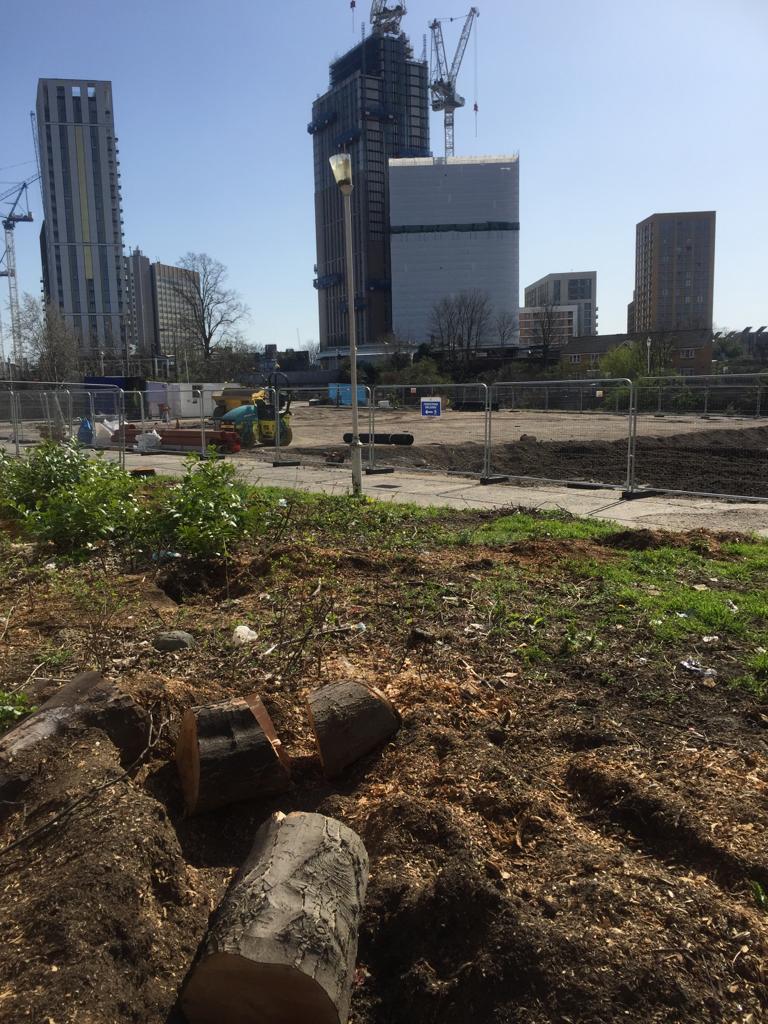By John Wood
email: maxripple@gmail.com
TREES ARE GOOD FOR CITIES:
- They reduce urban flooding
- They cool us down in heatwaves
- They reduce crime rates
- They improve mental health and wellbeing.
- They store carbon (i.e. reducing global warming)
- They support wildlife and other biodiversities
- They lower the prevalence of asthma.
WE ARE WAKING UP
It was heartening to see a revised Lewisham Biodiversity Action Plan endorsed by the Council’s Mayor and Cabinet on 3rd November 2021. The move was timely, too, given that many Londoners had enjoyed a brief reawakening of interest in trees, birdsong and local walks, courtesy of Covid-19. This was good news, but we need to take a fresh look at recent science and to reevaluate our place in the world.

THE HIDDEN VALUE OF TREES
Some eco-accountants say that one mature street tree can have a net ecosystem service value of thousands of pounds. Unfortunately, Britain chops down up to 60 trees per day to make way for buildings, roads and sewers. Perhaps urban councils can be forgiven for regarding elderly trees as expensive accidents waiting to happen? OK, they might be saving us from climate disaster, but surely, a new plantation will gobble up as much CO2 as an ancient forest? While these arguments may make sense in terms of raw carbon capture they overlook the critical importance of biodiversity.

FROM A DUET TO A TRIO
Recent science reminds us that ecosystems are not production lines. Indeed, it is no longer helpful to see biodiversity in traditional terms as the interaction of plants and animals. If we want better food security and climate stability we must also add fungi (e.g. moulds, yeasts, mushrooms) into the mix. This means remapping biodiversity from a duet of Fauna & Flora to a trio of Fauna, Flora and Funga. This bigger picture reveals that the preservation of ancient trees is a vitally important part of the process, as some varieties of fungi need trees that have lived for three or even four hundred years.
BECOMING PART OF THE CHANGE
In 2012, Chile became the first country in the world to protect fungi by law. In August 2021 the Species Survival Commission (SSC) of the International Union for Conservation of Nature (IUCN) called for the recognition – and legal protection – of fungi as one of three kingdoms of life, and critical to protecting and restoring Earth. We hope that the defining criteria of Lewisham’s Biodiversity Action Plan can soon be updated in accord with this larger agenda. It would mean, for example, replacing the phrase ‘animals and plants’ by ‘animals, fungi, and plants’. We would replace ‘fauna and flora’ by ‘fauna, flora, and funga’.

A NEGATIVE IDEA OF ‘GROWTH’
For a hundred years economists have been persuading us that money – rather than Nature – is what makes the world go round. The truth is that there can be no economy without ecology. The ‘old normal’ of the 20th century had been shaped by an industrial and economic agenda that consistently put short-term growth (i.e. economic) above long term growth (i.e. biodiversity and our future wellbeing). As a result the UK’s biodiversity rating is currently among the lowest 10% in the world.
THE LONG VIEW
We are waking up, but aspirational ad campaigns still glamorise bigger and shinier cars designed to barrel through empty streets made of steel, concrete and glass. Politicians talk about greener futures but they still think in the usual bureaucratic ways. Taxes, targets, penalties, votes and incentives are all very well, but they are too indirect to work. We cannot manage Nature on a top-down basis, as it uses ‘grass roots’ processes that work from the bottom upwards. While Lewisham’s Biodiversity Action Plan is a vital step on a path to a safer and healthier world, local communities and individuals will need to harness their imaginative visions in order to make the change.
BETTER ACCOUNTANCY
Scientists admit that they still know embarrassingly little about the symbiotic relationships between animal, plants and fungi, so watch this space. The good news is that there are many popular Blogs and books that provide the latest research on topics, such as greener gardening, permaculture and re-wilding. In the short term, some of the old problems will need traditional solutions. Large species of trees (e.g. planes, beech and oak) may need expensive, carefully engineered tree pits to help them grow safely and to protect their roots. But unless we address the climate emergency and loss of species the economic costs will become unaffordable. In this context every mature tree may be literally beyond value.
FURTHER READING
- Greener gardening Tips: https://www.bbc.co.uk/sounds/play/m00132y8
- Jonathan Moens, (2021), Flora, Fauna, and … Funga? The Case for a Third ‘F.’ https://undark.org/2021/08/09/flora-fauna-and-funga/
- Sheldrake, M., (2020), Entangled life: how fungi make our worlds, change our minds & shape our futures. Random House.
- Susca, T., 2019. Green roofs to reduce building energy use? A review on key structural factors of green roofs and their effects on urban climate. Building and environment, 162, p.106273.
- Webb, J. and Moxon, S., (2021). A study protocol to understand urban rewilding behaviour in relation to adaptations to private gardens. Cities & Health, pp.1-9.
CONTACTS
- Lewisham Biodiversity Partnership: https://natureconservationlewisham.co.uk/lewisham-biodiversity-group/
- The European Federation of Green Roofs & Walls: https://efb-greenroof.eu
- The FFF Initiative https://faunaflorafunga.org

